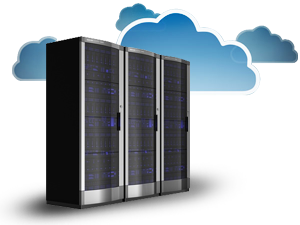
Colocation is awesome. For those of you that don’t know what it is exactly, let me explain it quickly.
Colocation means running your company-owned hardware off-premise, usually in a datacentre. You rent space in the datacentre in the form of racks or “rack units” which is encapsulated in a monthly fee.
Why choose colocation?
- Convenience – No matter how big your company is, running servers and hardware on-premise is expensive. You’ll need a dedicated room which should have – actually NEEDS – reliable power supply, air-conditioning and redundant internet links coming in from the outside world. Not to mention the room needs to be physically secure to prevent hackers from being able to physically access or steal the hardware, and needs to have fire-prevention measures fitted which can often cost an absolute ton of money to install. If you’ve already got all this in place, great! That brings me onto point 2…
- Planning on moving offices at some point? – If your infrastructure is already sitting in a datacentre, your office move just became a whole lot easier. All you need to move offices now is a link from your new site back to the datacentre, and you’re good to go! If you have to lift and shift your infrastructure at the same time, let me tell you – that’s a project on its own.
- Reliability – Depending on which datacentre you choose, you’ll usually benefit from a huge amount of connectivity in and out, redundant links, power and cooling and everything needed for a near-bulletproof hosting solution.
- Cloud Connectivity – It’s important, especially in this day and age, that your infrastructure is cloud-ready. You might be thinking of running virtual workloads in a public cloud at some point, well if you want to make use of services such as Azure ExpressRoute or Amazon Web Services Direct Connect (which is a direct link from your infrastructure to theirs) you’ll need to be in a datacentre that has Microsoft or Amazon presence, in fact you won’t be able to use them if you’re running hardware on-premise and will instead have to use a VPN. Moving workloads back and forth, or having your DR environment in the public cloud, should ideally benefit from such a link.
- Maintenance – If your servers are hosted in a datacentre, it always makes a lot of sense to put a service wrap around them too. `
- Savings – Over time, you might find that having a monthly bill that includes electricity, cooling and connectivity is actually cheaper than running it all on-premise. This should definitely be looked into. And if it’s not cheaper per se, how much money would you lose if your infrastructure went down because of power issues, or a natural disaster? Datacentres are a lot more resilient to such occurences, therefore having your infrastructure inside one (or two) of them really can be priceless!
So whether you want to do this for convenience, or for the safety net that it provides, it should definitely be considered!
Graeme

Leave a Reply